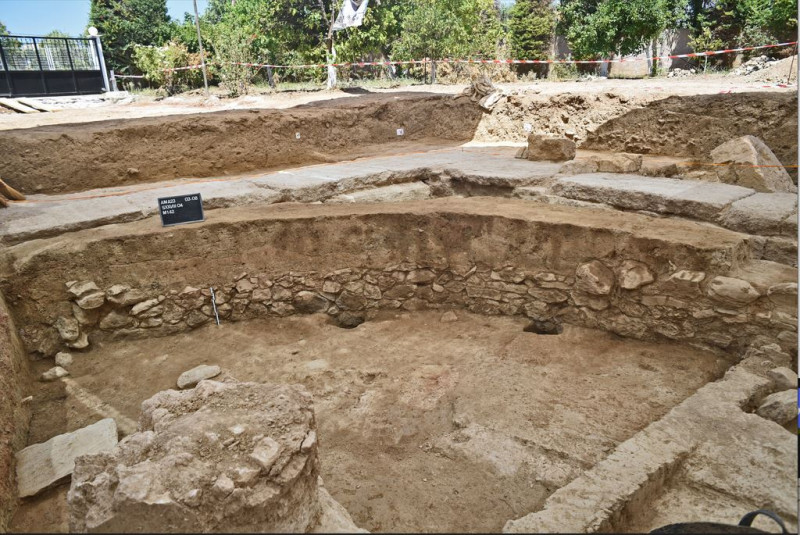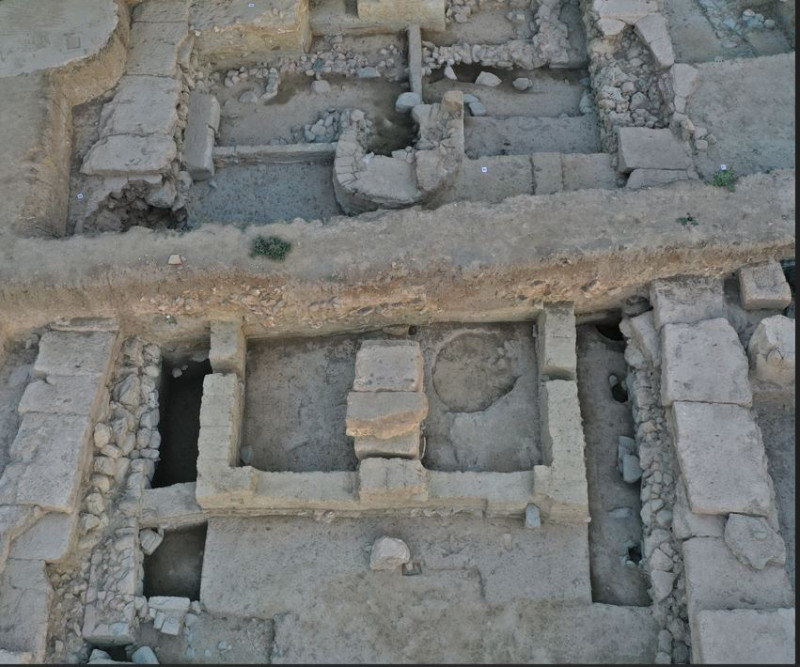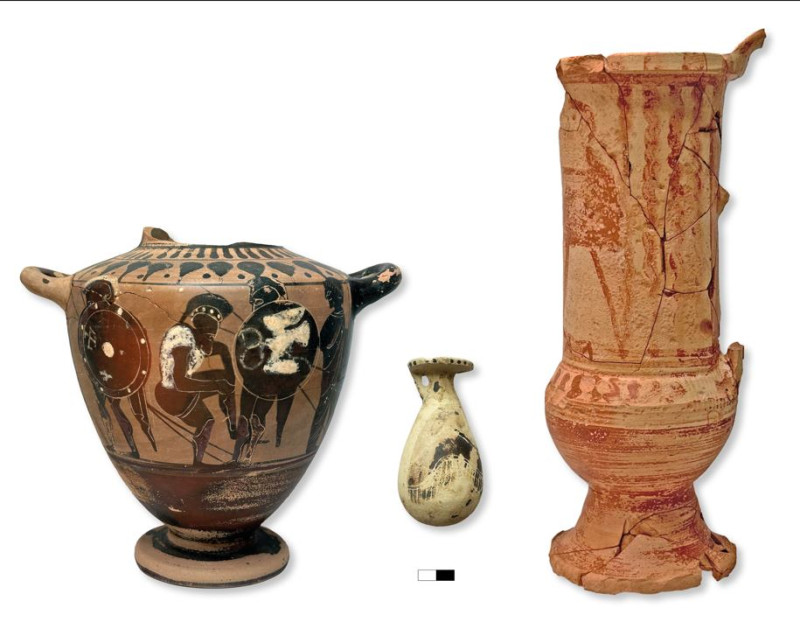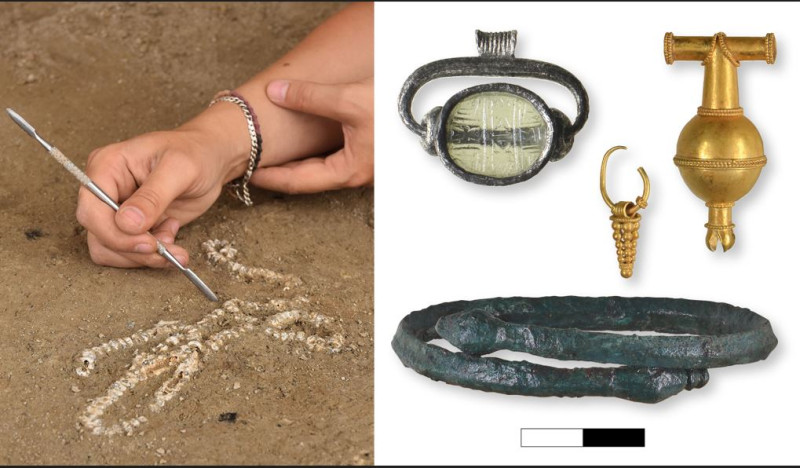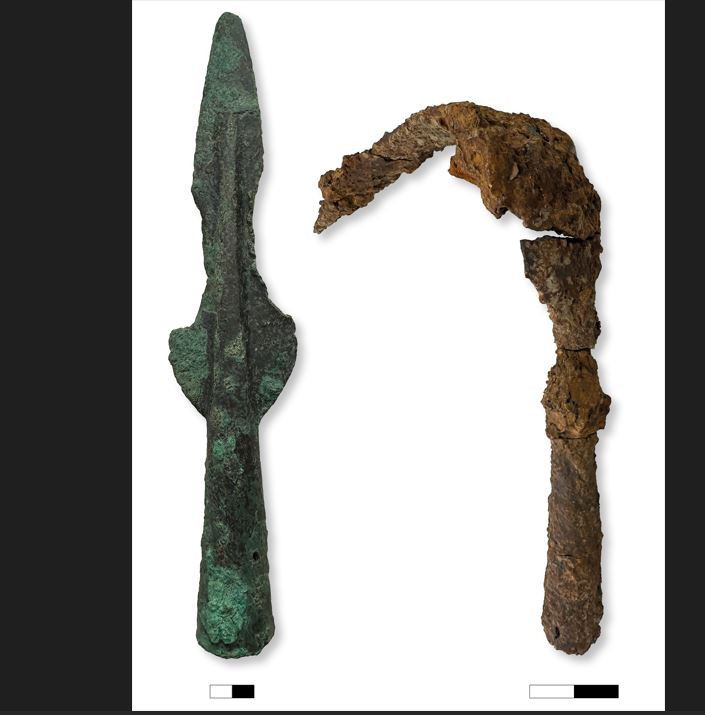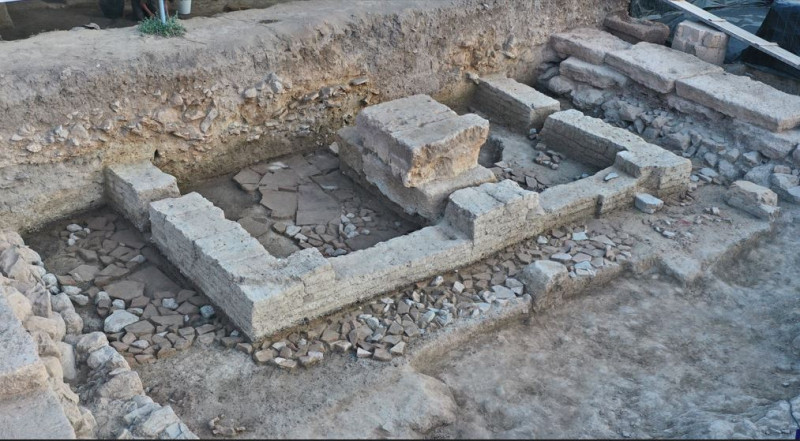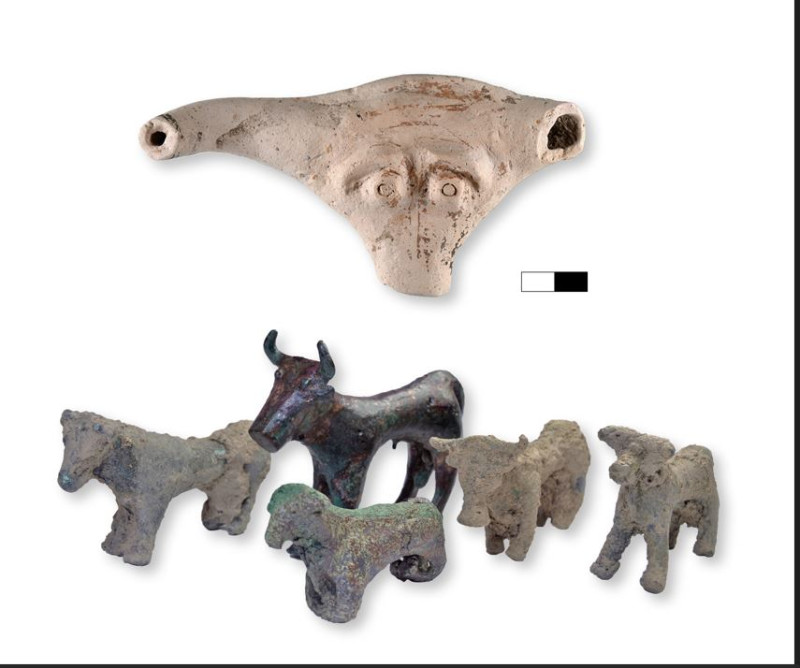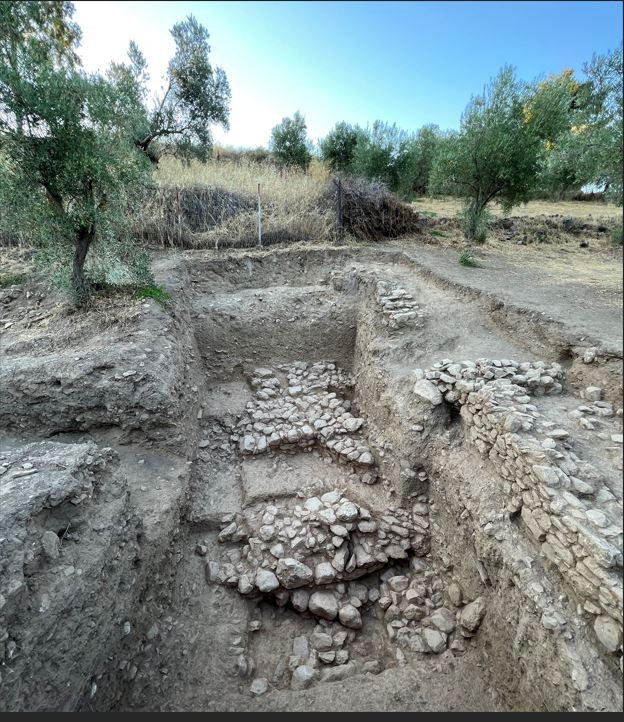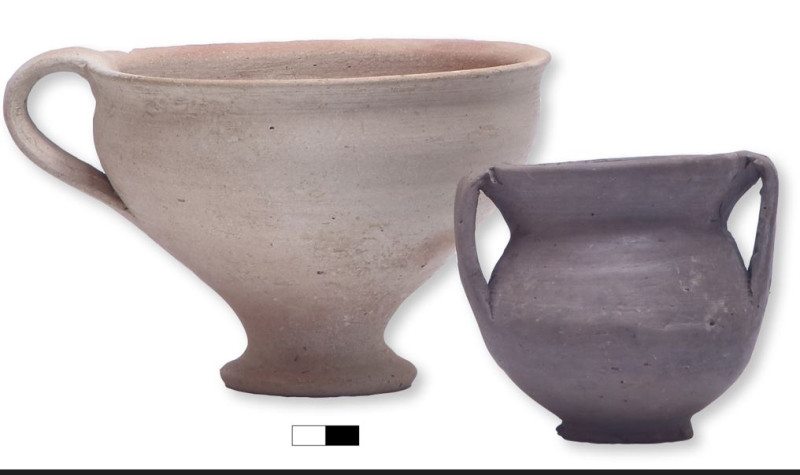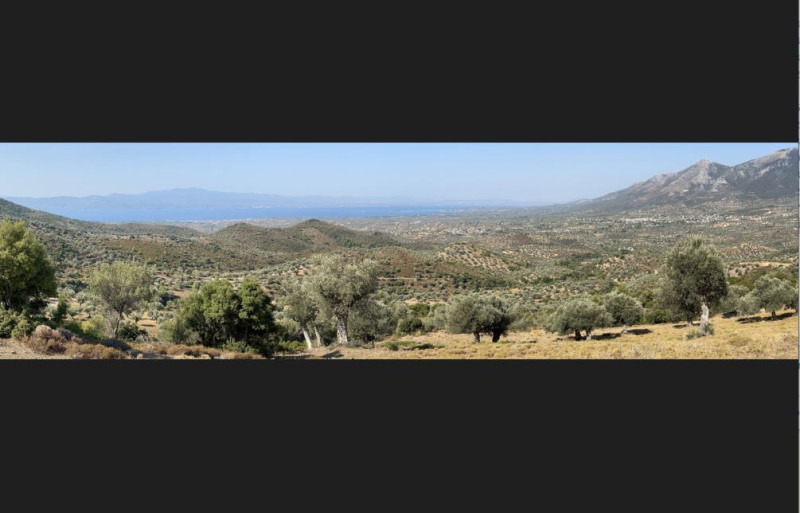The temple of the goddess Artemis was built towards the end of the 6th century BC.
The antiquity of the cult of Amarissia Artemis in Amarynthos in Evia is evidenced by the excavations of 2023, which have been carried out for years by a group of Swiss and Greek archaeologists.
According to an announcement by the Ministry of Culture, “the 2023 excavations completed the revelation of yet another temple dating back to the 7th century BC.” Its length reaches 100 feet (or 34 m.), adopting the symbolic measurement found in several “hundred-story” temples of this period in Hellas, such as the nearby sanctuary of Apollo at Eretria.
In particular, every summer, a group of Swiss and Greek archaeologists investigates the remains of the sanctuary of Amarysia Artemis near Amarynthos in Evia. The excavation period that has just been completed marked a new phase in this research project, which began about fifteen years ago. Under the foundations of the temple of the goddess, buildings were revealed that testify to the antiquity of her worship.
The sanctuary of Amarysia Artemis at Amarynthos at the end of the 2023 excavation season
The first archaic temple
Already in 2017, archaeologists brought to light the foundations of a monumental building in the heart of the sanctuary (fig. 1-2). The excavations that followed proved that it is the temple of the goddess Artemis, built towards the end of the 6th century BC. Although the superstructure and decoration of this building, measuring about 39 x 11 m, have been almost completely destroyed, its foundations protected the walls of older buildings, the remains of which are preserved in excellent condition.
The temple of Artemis. Several buildings dating from at least the 8th c. e.g. in the same space
The 2023 excavations completed the revelation of yet another temple dating back to the 7th century BC. (fig. 2). Its length reaches 100 feet (or 34 m.), adopting the symbolic measurement found in several “hundred-floor” temples of this period in Hellas, such as the nearby sanctuary of Apollo in Eretria. On its eastern side, the temple preserves a well-constructed wall with a pilaster, while its western side ends in an arch. The temple is built of rough bricks on a solid foundation of dry stone, which proves that the ground was still swampy at the time of its construction. Along the inner wall, the temple was strengthened by pillars located at regular intervals, which no doubt contributed to the support of a heavy tiled roof (fig. 3).
Arched wall of the early Archaic temple, 7th-6th c. e.g.
The altars of the goddess
One of the peculiarities of this temple is the significant number of constructions found inside it. Several hearths used for altars (?) were located in the center of the nave. In addition, the horseshoe-shaped altar, which was originally thought to have stood outside the temple, occupies a space that can be characterized as a pronaos (fig. 4). A thick layer of ash, rich in charred bones, testifies to the long use of these structures. The possibility that some of them predate the temple cannot be ruled out: the first level of use of the horseshoe altar yielded pottery dating to the end of the 8th century BC.
Horseshoe altar of the early archaic temple, 7th-6th c. h. e.g.
As in previous years, this year as well, the excavation of the archaic temple brought to light rich offerings: Corinthian alabaster, Attic vases, ritual prochos of local production (fig. 5), as well as jewelry made of precious materials (gold, silver, coral, amber) (fig. 6), amulets from the East (fig. 7), bronze and iron fittings (fig. 8).
Black hydria of Euboean production, end of the 6th c. e.g. Corinthian alabaster, Siren with open wings right, late 7th – early 6th c. e.g. High-necked, locally produced, 7th century. e.g.
Necklace with faience beads. Silver periapto with inlaid glass. Gold ring and periapto. Bronze bracelet with snake head-shaped finials, 8th-7th century. e.g.
Egyptian bone head, 8th-7th c. e.g. Faience figurines of the god Bes, 8th-7th c. e.g. Stone seal stones, 8th-7th c. e.g.
Bronze spearhead, 8th-7th c. Iron spearhead, Archaic period. Both objects had been deliberately rendered useless – ‘killed’
The temple was partially destroyed, probably by fire, in the third quarter of the 6th century BC. Brick partitions were then placed to protect the center of the cult space until the new temple was built towards the end of the 6th century (fig. 9).
Walls made of rough bricks, end of 6th c. e.g.
Before the Archaic period
Below the levels of use of the first archaic temple, dry stone walls are found, which belong to an elongated building of the same orientation, with configurations in its interior, whose exact dimensions and plan remain to be clarified (fig. 1-2). In front of this building, strata older than the horseshoe altar yielded several Geometric period bronze figurines representing bulls and a ram, while a clay bull head of the Mycenaean period is impressive (fig. 10). Outside the temple area, test cuts also revealed remains of buildings from the 9th and 8th centuries BC, testifying to the extent of the site at that time (fig. 11). Although the investigation of the earliest of these levels has only just begun, the first discoveries suggest that the cult had its roots in the centuries after the end of the Mycenaean period.
Bronze figurines of a bull and a ram, 9th-8th c. e.g.; Head of a wheeled clay bull figurine, Mycenaean period
Remains of the Early Iron Age in the southeast of the temple, 9th-8th c. e.g.
The prehistoric settlement on the hill of the Old Churches
Excavation sections on the hill of the Old Churches confirmed the existence of imposing walls of the Early Bronze Age (3rd millennium BC) which undoubtedly belong to a fortification system of the prehistoric settlement, which extended on its slopes and top (fig. 12 ). The remains of the following centuries have almost entirely disappeared due to soil erosion, with the exception of an early Late Bronze Age tomb, which has been uncovered near the hilltop plateau and in which skeletons with their offerings were found (fig .13).
Fortification walls of the Early Bronze Age on the western slope of the hill of the Old Churches, 3rd millennium BC
Single cup and gray minachian krater from an early Late Bronze Age grave, 17th-16th c. e.g.
Understanding the inclusion of the sanctuary in the ancient landscape
In parallel with the excavations of the sanctuary, a systematic surface survey is being carried out in the catchment area of Sarantapotamou, which stretches between Amarynthos and the ancient city of Eretria (fig. 14). This research aims to understand the inclusion of the sanctuary in the ancient landscape through the study of the evolution of the environment since antiquity, the distribution of rural settlements over the centuries, necropolises, quarries, agricultural land, as well as the ancient network communication, with an emphasis on the “Sacred Road” that connected Artemisio of Amarynthos with Eretria.
The Saradapotamos watershed, between Amarynthos and Eretria, which is being investigated as part of a systematic surface survey by EASE and EFAEVB.
The excavation and research team
The excavation team gathered in 2023 more than 50 archaeologists, conservators, other experts, workers and students from Switzerland, Greece and other countries. The Amarynthos research program is a collaboration of the Ephorate of Antiquities of Evia of the Ministry of Foreign Affairs, under the direction of Angeliki G. Simosi, Head of the Ephorate of Antiquities of Piraeus and the Islands, who was Head until the end of 2022 at the Ephorate of Antiquities of Evia and SylvianFachard , Director of EASE and Professor at the University of Lausanne. The field research is led by Olga Kyriazi (EFA Evia) and TobiasKrapf and TamaraSaggini (EASE).
Source :Skai
I am Frederick Tuttle, who works in 247 News Agency as an author and mostly cover entertainment news. I have worked in this industry for 10 years and have gained a lot of experience. I am a very hard worker and always strive to get the best out of my work. I am also very passionate about my work and always try to keep up with the latest news and trends.



